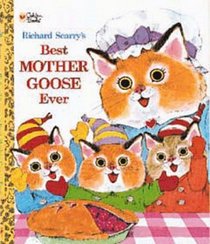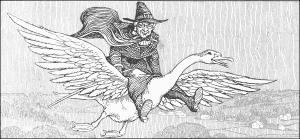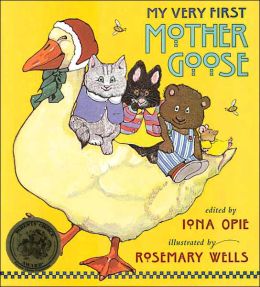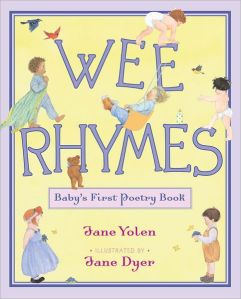“Mother Goose rhymes, baby verse-that kind of singsong, sing-along rhythm-is as important as a heartbeat.”
~ Jane Yolen and Jane Dyer ~
April is National Poetry Month and there is no better way to introduce young children to the joys of poetry than with Mother Goose.
Although the true origins of Mother Goose are lost to history, experts agree that Charles Perrault was the first to record the poems and songs we now think of as Mother Goose rhymes. They became popular in England in the early 18th century, and the first English editions were published in the late 1700s.
Reading and singing nursery rhymes is more than fun and games, though. Noted reading expert and researcher Maryanne Wolf notes that “teaching a child to enjoy poetry and music is serious child’s play.” When parents and caregivers read poetry and Mother Goose rhymes to children, they’re helping them develop an awareness of the rhythms and rhymes of language. This helps children develop phonological awareness, “a sensitivity to the sound structure in language,” a skill that plays a central role in the becoming a successful reader. Sharing these timeless tales also builds young children’s vocabularies and gives them a sense of story structure.
Mother Goose also provides children with a shared cultural knowledge they will need as they encounter more sophisticated literature. Fractured fairy tales like The Stinky Cheese Man and The True Story of the Three Little Pigs are very popular, but without knowledge of the original stories, much of the humor is lost. Imagine watching Shrek! without knowing any of the nursery rhymes and folk tales being alluded to throughout the movie.
There are many editions of Mother Goose rhymes available. My personal favorite is the one I read to my own children when they were small, Richard Scary’s Best Mother Goose Ever. (Golden Press, 1964) This edition included fifty rhymes that are illustrated with Scary’s trademark cheerful animals.
My Very First Mother Goose (Candlewick, 1996), edited by Iona Opie and illustrated by Rosemary Wells is another popular collection. Opie, a noted folklorist, includes more than sixty rhymes in this volume.
Jane Yolen, who has been called the Hans Christian Anderson of our day, and illustrator Jane Dyer have teamed up to create Wee Rhymes: Baby’s First Poetry Book (Simon & Schuster Books for Young Readers, 2013). The collection is organized around the daily life of little ones. Hugs and kisses, food, play, nature, baths, and bedtime are each captured perfectly in Yolen’s original poems. A traditional Mother Goose rhyme introduces each section. Jane Dyer’s sweet illustrations depict babies and toddlers engaged in the joy of childhood.
Children are never too young or too old for poetry and rhymes. As Jim Trelease, author of The Read-Aloud Handbook, says, whenever we read to children we are “stimulating imagination …and whetting the appetite for a love of reading.”



Apr 11, 2014 @ 18:18:52
How interesting! I love that quote at the top of your post. WEE RHYMES sounds like a beautiful book and the perfect gift for new parents!
Apr 15, 2014 @ 04:27:01
Congratulations on your new blog, Catherine. I have to find Wee Rhymes. I love Mother Goose.